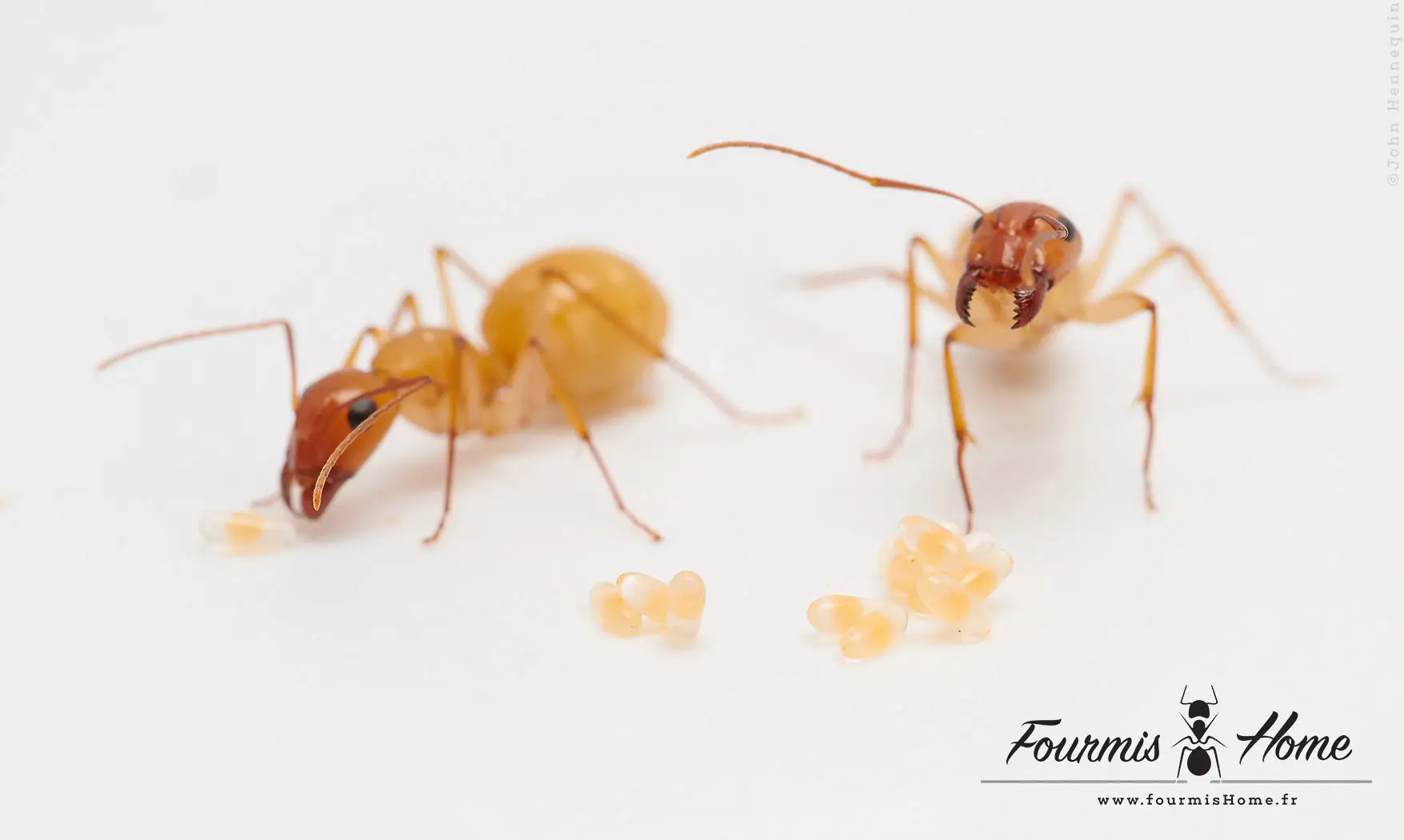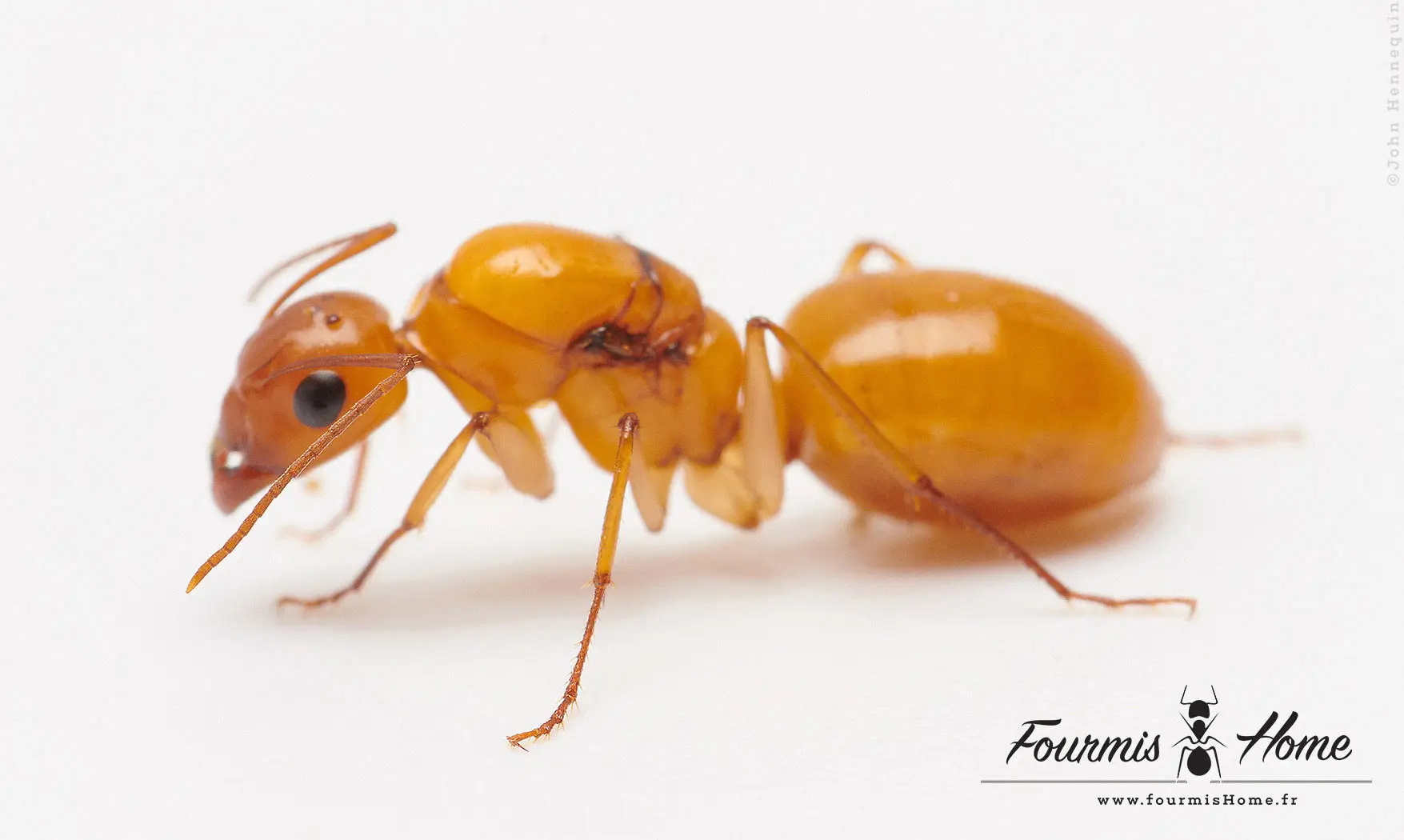





Camponotus turkestanus
Reference : CFOUR-098
239.90€
Available
0 in stock
Latin name: Camponotus fedtchenkoi
Taxonomy: Subfamily: Formicinae, Tribe: Camponotini
Breeding level: Intermediate, temperatures must be respected
Geographical distribution: Kashastan, Mongolia, Uzbekistan, Turkmenistan, North-West China
Habitat: Steppe landscape, semi-desert
Colony form: Monogyne
Queen: Size: 15 - 16mm Color: Bright yellow, strong thorax
Workers: Size: 5 - 12mm Color: Bright Yellow
Major: Size 14 - 18mm Color: Bright yellow strong chest
Male: Size: 13mm Color: bright yellow
Food: Honeydew and insects: like flies, mealworms, mosquitoes and small crickets; also fruits
Humidity: Hunting area: 30 - 50% Nest: 50 - 70%
Temperature: Hunting area: 18 - 35 ° C Nest: 24-28 ° C
Hibernation: No, but winter break is recommended from November to March at room temperature
Nest type: Plexiglass nest, nest with classical tube or plaster, reconstituted stone nest
Description: Camponotus fetchenkoi is exceptional in many ways, it is the only known species of Camponotus that may have majors much larger than the queen and in very large numbers, it is also one of the most aggressive species of Camponotus to the world that will throw on everything that moves in the hunting area.
Development: Swarming in June and July
Foundation: Claustral (without food) Development: 35 days from egg to worker (depending on temperature)
Size of the colony: Several hundred individuals, the queen can reach the age of 15 years.
Taxonomy: Subfamily: Formicinae, Tribe: Camponotini
Breeding level: Intermediate, temperatures must be respected
Geographical distribution: Kashastan, Mongolia, Uzbekistan, Turkmenistan, North-West China
Habitat: Steppe landscape, semi-desert
Colony form: Monogyne
Queen: Size: 15 - 16mm Color: Bright yellow, strong thorax
Workers: Size: 5 - 12mm Color: Bright Yellow
Major: Size 14 - 18mm Color: Bright yellow strong chest
Male: Size: 13mm Color: bright yellow
Food: Honeydew and insects: like flies, mealworms, mosquitoes and small crickets; also fruits
Humidity: Hunting area: 30 - 50% Nest: 50 - 70%
Temperature: Hunting area: 18 - 35 ° C Nest: 24-28 ° C
Hibernation: No, but winter break is recommended from November to March at room temperature
Nest type: Plexiglass nest, nest with classical tube or plaster, reconstituted stone nest
Description: Camponotus fetchenkoi is exceptional in many ways, it is the only known species of Camponotus that may have majors much larger than the queen and in very large numbers, it is also one of the most aggressive species of Camponotus to the world that will throw on everything that moves in the hunting area.
Development: Swarming in June and July
Foundation: Claustral (without food) Development: 35 days from egg to worker (depending on temperature)
Size of the colony: Several hundred individuals, the queen can reach the age of 15 years.

